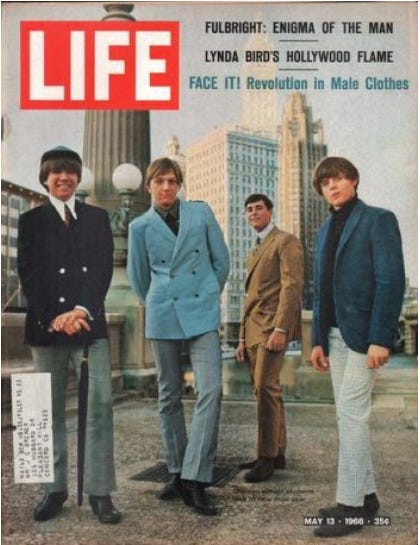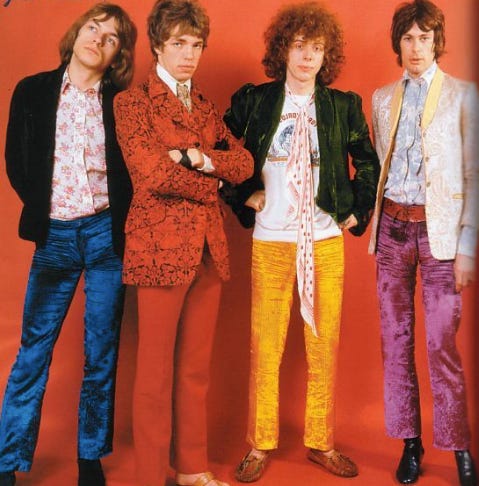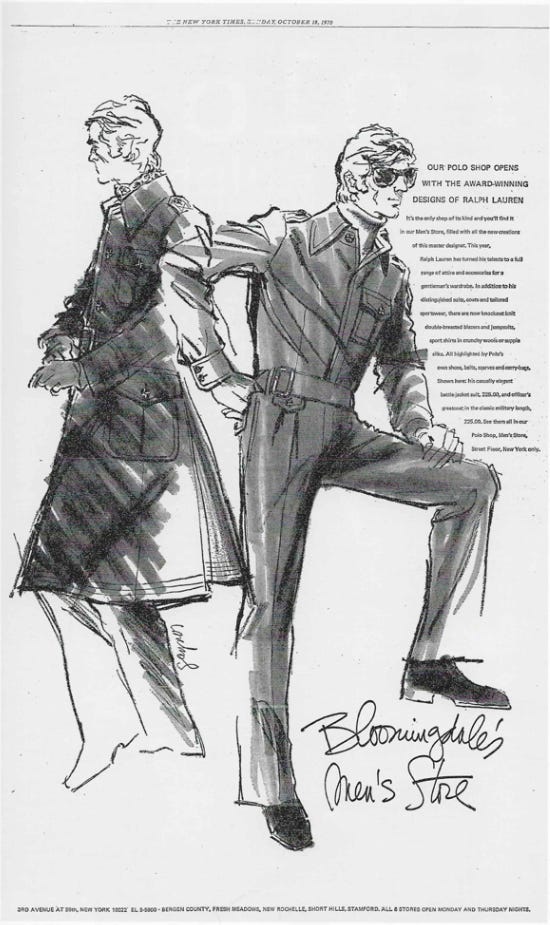Without further ado, chapter 4:
And, as ever, transcript
Ready yourself, this newsletter has some very crooked scanning jobs. Sorry! (This reminds me of one time when I audited a class that Anthony Braxton was teaching and all his slide images were at like, 45°— I made so much fun of him at the time and now I’m doing that! Whatever, we’re trying over here.)
This chapter, our hero, Kensuke Ishizu, decided to turn his company, Van Jacket, into an Ivy League style clothing company. And he turns the magazine Men’s Club into a guide for how to wear Ivy style.
Then there’s this really fascinating twist: kids in Japan start getting arrested for wearing Ivy clothes. Like put in jail. You can hear why in the story, but Ishizu had a major PR problem on his hands, and realized he needed to do more to get everyone in Japan on board with this look. So he decides the best thing he can do it… to make a movie.
Ishizu gathers all these people and resources to male a film of students on American Ivy League campuses. And when he and his team arrive on the Harvard campus, they promptly start flipping out. Because students are not dressed the way he thought they would be dressed. Because now the year is 1965.

By 1965, it was clear that what Benjamin Franklin had dubbed “our happy mediocrity” was not so happy anymore. Americans were starting to see that conformity was killing us. And I’m not only talking about rebellious college students. Corporate America also wanted to get away from punch cards and corporate rigidity, and wanted to develop new, creative, freer forms of management. You can see this turn away from conformity and this embrace of “rebellion” in the advertisements of the time.
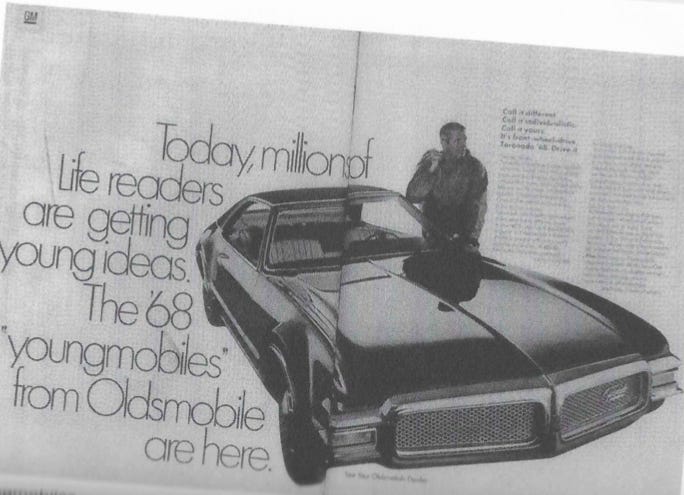
Rebellion was mainstream. You didn’t want to follow trends to keep up with the joneses. Now you wanted to go try out new trends to stand out from the Joneses! The advertising industry was all on board with this. And so was the fashion industry.
The Mod trend, imported from England (and, arguably, an off-shoot of Ivy!) kicked off what would be known as the Peacock revolution. The Peacock Revolution, in the best way, was totally bonkers- combining fashion from all eras all together all at once, and generally putting men’s fashion into hyperdrive.
But the Peacock revolution came on so hard and so fast, it couldn’t last. Already by 1972, you can see a backlash against it in advertisements like this
And no one was more successful at puncturing the swirling confusing retro overload of the Peacock Revolution.. than a young Jewish college drop out from the Bronx.
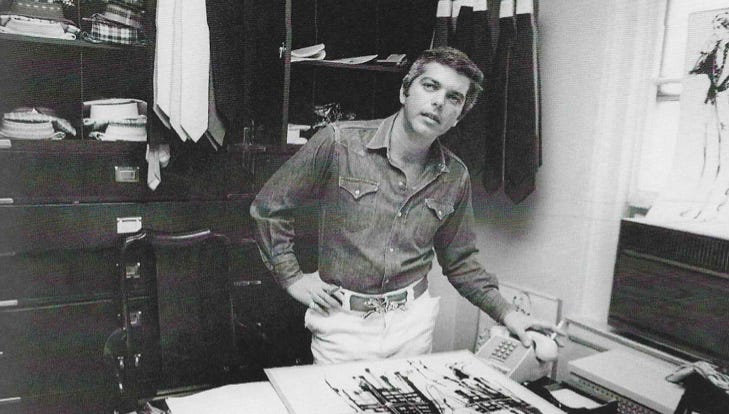
Ralph Lauren started his clothing line by making ties. Ties that were wide and sumptuous, like the ties he liked to imagine that Fred Astaire would wear.
And this became Ralph Lauren’s whole thing.
Which was really clever, because if you make a wide tie, you’re going to need shirts with wider collars and different-sized lapels. So Ralph expanded and expanded his line. He created a look that was sort of like Brooks Brothers, but sexier and tighter. And more than a little bit Ivy. It was so cohesive, so successful, that Ralph was the first designer to have his own shop within Bloomingdales.
Very quickly, the consumer caught on what Ralph Lauren was selling. And it was the right look at the right time. Ralph Lauren was about to rocket to superstardom, all throughout the 70s into the banner year 1980: the great year of the Preppy. And Ralph Lauren would be instrumental in making “preppy” something different from “Ivy.”
But that’s next chapter.
Thanks as ever for listening! And hey, if you’ve been enjoying the series, may I ask you to tell friend or two?
Yours,
Avery




